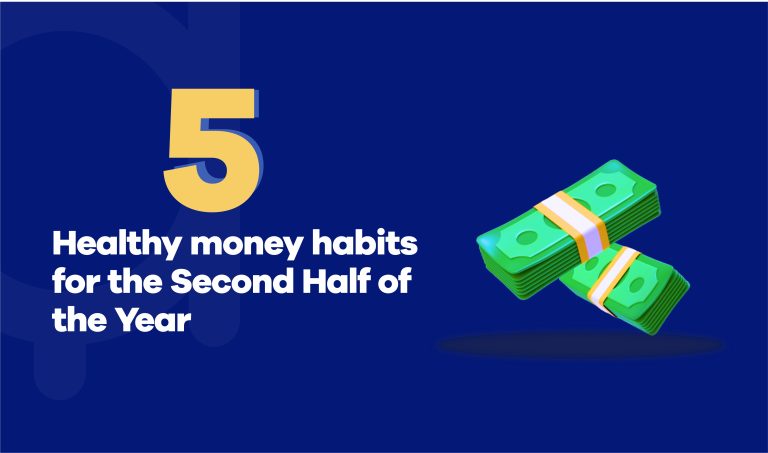Are you financially fit? Just as your physical fitness requires regular exercise and a balanced diet, financial fitness needs careful management of your money. However, identifying whether you are financially stable can sometimes be difficult. Financial stability is important for achieving peace of mind. Here are indicators of financial instability, the potential causes, and advice on how to regain control of your finances again.
Signs You Might Be Financially Unstable
1. Living Paycheck to Paycheck
If you find yourself waiting for your next paycheck to cover basic expenses, you just might be financially unstable. This means you have little to no savings and are highly dependent on your monthly income to meet your financial needs.
High Living Costs: If your lifestyle expenses exceed your income, you may struggle to save and manage your finances effectively.
Zero Budgeting: Without a proper budget, it’s easy to overspend and find yourself without sufficient funds before your next paycheck.
2. Accumulating Debt
Consistently owing or taking out loans to cover expenses is a big sign of financial instability. High-interest loans can quickly spiral out of control, leading you to financial stress.
Overspending: Spending beyond your means often results in accumulating debt.
Emergencies: Unexpected expenses, without an emergency fund such as medical bills or car repairs, can force you to rely on loans.
3. No Emergency Fund
An emergency fund is your financial safety net for unexpected expenses. If you don’t have at least three to six months’ worth of living expenses saved, you are at risk of financial instability.
Inadequate Savings: Failing to prioritize saving can leave you vulnerable in emergencies.
Irregular Income: Fluctuating income is another challenging cause to build an emergency fund.
4. No Financial Goals
Without goals, it’s difficult to measure progress and stay motivated. Not having clear financial goals, such as saving for retirement, or investing, indicates a lack of direction in your financial planning.
Short-Term Focus: Prioritizing immediate needs and wants over long-term financial planning.
Lack of Knowledge: When you have little to no understanding of the importance of setting financial goals and how to achieve them you will not prioritize goals.
What could lead you into Financial Instability?
1. Zero Financial Education
If you lack understanding about personal finance, including budgeting, saving, and investing, it can lead to poor financial decisions. Financial education is important for managing money effectively.
2. Economic Factors
Inflation and market instability can affect your financial stability. These are external factors beyond your control that may reduce your income or increase your living costs, making it harder to maintain good finances.
3. Lifestyle Choices
Living beyond your means, such as overspending can quickly reduce your resources. Maintaining an expensive lifestyle without sufficient income or savings is a recipe for financial stress.
What are the results of Poor Finances?
1. Increased Stress and Anxiety
Financial instability often leads to stress and anxiety, affecting your overall well-being. Worrying about money can affect your mental and physical health negatively.
2. Limited Financial Freedom
Financial instability limits your ability to make choices and take advantage of opportunities. Whether it’s investing in your education or starting a business, financial insecurity restricts your options.
How can you escape Financial Instability?
1. Create a Budget
Track Your Expenses: Monitor your spending for a month to understand where your money is going.
Set Limits: Allocate money for essential expenses, savings and miscellaneous.
Stick to It: Consistently follow your budget and adjust as needed.
2. Build an Emergency Fund
Start Small: Begin by saving a small portion of your income regularly and you can do that with the Flex Wallet plan on Vale that pays your interest daily and allows you to access your savings 24/7.
Automate Savings: Set up automatic transfers to your locked savings with the My Target plan on Vale.
4. Set Financial Goals
Define Your Goals: Identify short-term and long-term financial goals, such as saving for a vacation, retirement or buying a house that can be achieved with Vales Saving Challenge with My Target plan.
Create a Plan: Draft a step-by-step plan to achieve each goal, including specific milestones and deadlines.
Review Regularly: Assess your progress and adjust your plan as needed.
5. Improve Financial Literacy
Educate Yourself: Read books, attend webinars or take online courses on personal finance topics.
Stay Informed: Keep up to date with financial news and trends to make informed decisions.
Financial stability is essential and taking proactive steps like creating a budget, building an emergency fund, paying down debt, setting financial goals, and improving your financial literacy, can help you regain control and work towards a more stable future.
At Vale, we are committed to helping you grow financially. Our digital banking solution provides everything you need to manage your money effectively, save for your goals, and invest in your future. Download the Vale App today and take the first step towards financial freedom.
Remember, achieving financial stability is a journey, and every step you take brings you closer to your end goal. Start today with Flex wallet on the Vale App and watch your savings grow.


